Order: Passeriformes. Family: Muscicapidae
Description
Length 18-20 cm, mass about 35 g. Like other wheatears, it has a distinctive tail pattern, with a white rump and outer tail feathers. Its legs and pointed bill are black.
Males show variable plumage colouration and occur in three different variations; a grey morph, a dark morph and a pied morph. But all have a white rump, white sides to the tail and a white shoulder patch. The body plumage varies from pale grey to almost black. The white cap may or may not be present (crown may be white, grey or black). The wings are very dark brown or black with a white shoulder patch which varies in size (sometimes all black).
Female is uniformly sooty brown except for the white rump and outer tail feathers, and juvenile resembles female.
Similar species: Some confusion does occur between grey-morph males and Karoo Chats Emarginata schlegelii, and also between females and Ant-eating Chats.
Distribution
Near-endemic to southern Africa, occurring from south-west Angola through Namibia to South Africa.
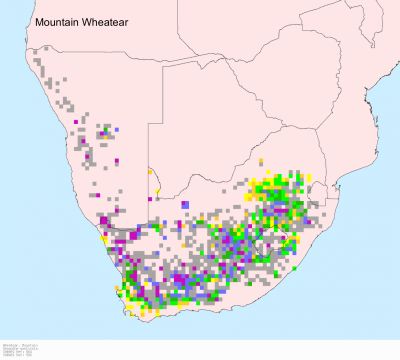
Taxonomy
There are four subspecies regonized:
Oenanthe monticola monticola: S Botswana, S Namibia, South Africa (E to C Northern Province and W KwaZulu-Natal), W Swaziland and Lesotho.
Oenanthe monticola albipileata: Coastal Angola (Benguela escarpment)
Oenanthe monticola nigricauda: Angola (highlands of Huambo and s Cuanza Sul)
Oenanthe monticola atmorii: N Namibia (south to Damaraland)
Habitat
Mountainous and rocky terrain.
Diet
It eats insects and berries. It mainly eats invertebrates, often foraging on the ground and on rocks, plucking smaller prey leisurely but also chasing and stabbing larger invertebrates. It may also forage from a perch, pouncing on prey on the ground or hawking them in the air.
Breeding
It is monogamous. The nest is constructed solely by the female in about 4-14 days, consisting of a shallow cup set into an untidy platform built of a variety of materials, such as grass, woody stems, twigs, trapdoor spider webs, petioles, dried flowers, seeds, larval and pupal Lepidoptera cases, dried moss, pebbles, dung and snake skin. It is typically placed beneath a boulder, in a crevice set into a rock, wall or building. Egg-laying season is from June to March, peaking from September to November. The female lays 2-4 white eggs, which are incubated solely by the female for about 13 days, occasionally leaving the nest to forage while the male defends the territory. The chicks are brooded by the female at night for the first 10 days of their lives, with both adults feeding them on a diet of insects and Arthropods. They eventually leave the nest after about 14-17 days, becoming fully independent about a month later.
Call
The Mountain Wheatear’s song is a clear melodic whistle interspersed with harsh chatters.
Status
Near endemic. Common resident.



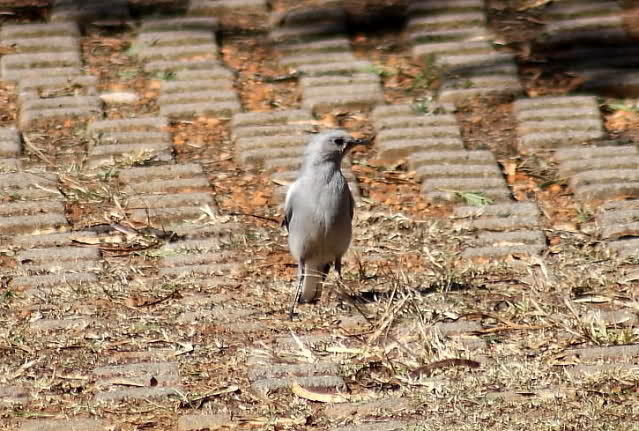 © Flutterby
© Flutterby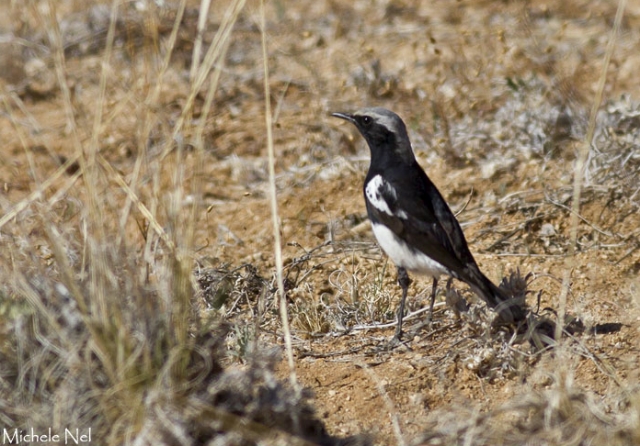 © Michele Nel
© Michele Nel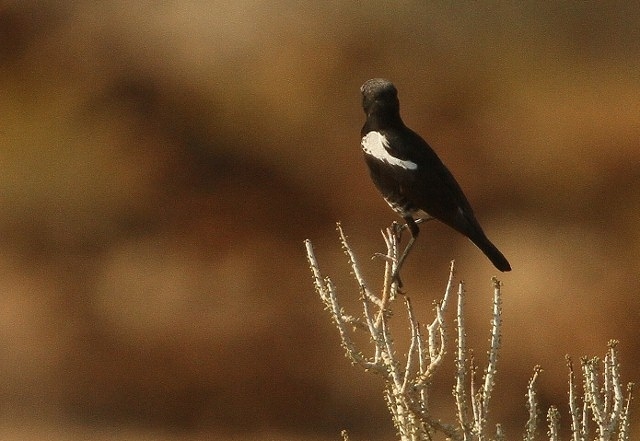 © nan
© nan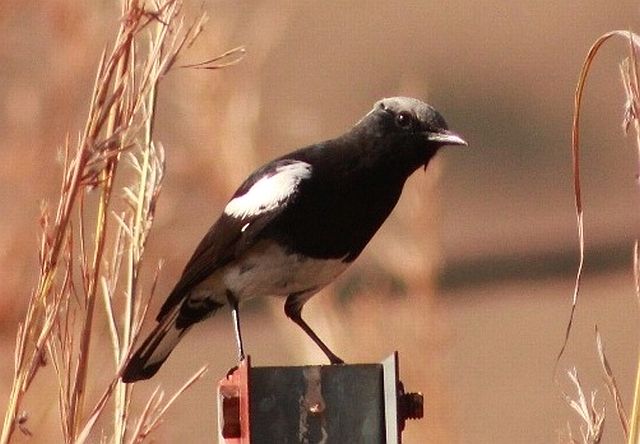 © Amoli
© Amoli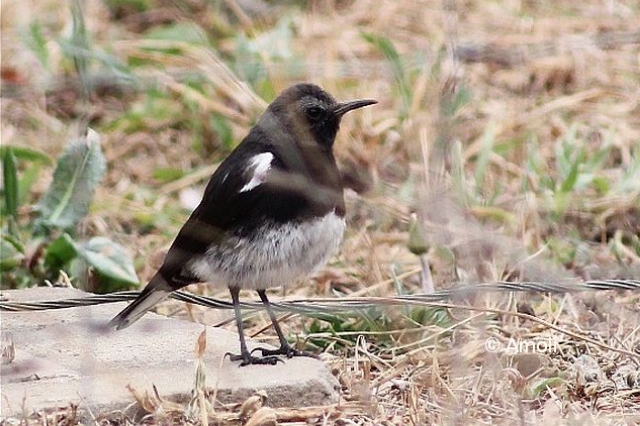 © Amoli
© Amoli
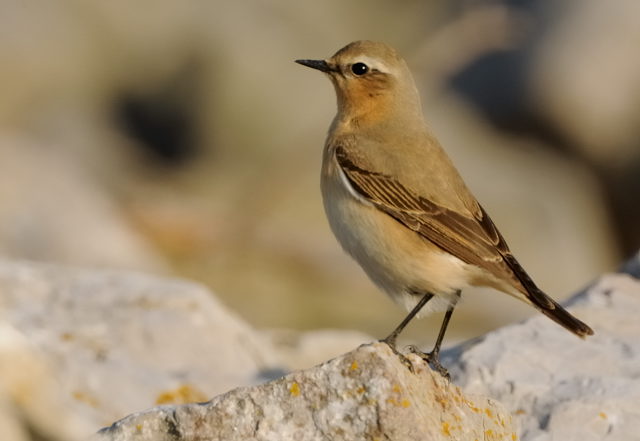 © Dewi
© Dewi © Dewi
© Dewi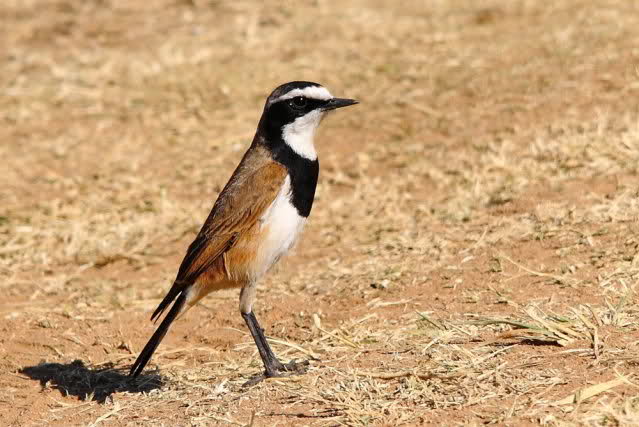
 © Dewi
© Dewi © Michele Nel
© Michele Nel © Michele Nel
© Michele Nel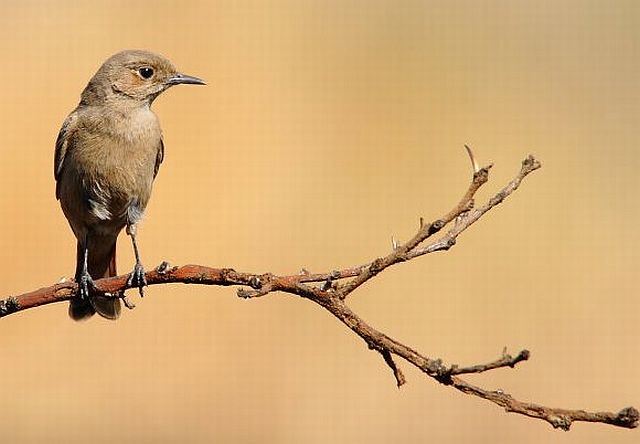 © Flutterby
© Flutterby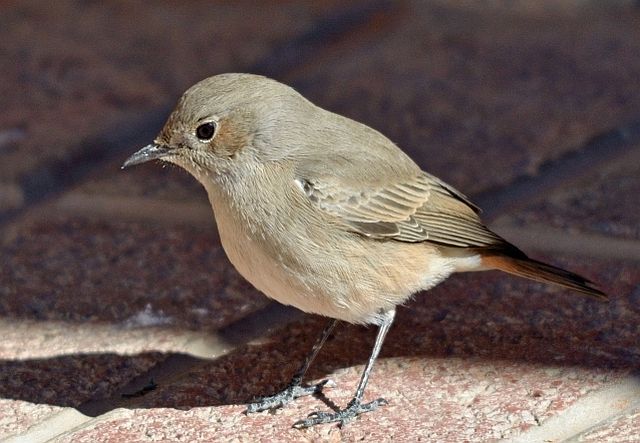 © BluTuna
© BluTuna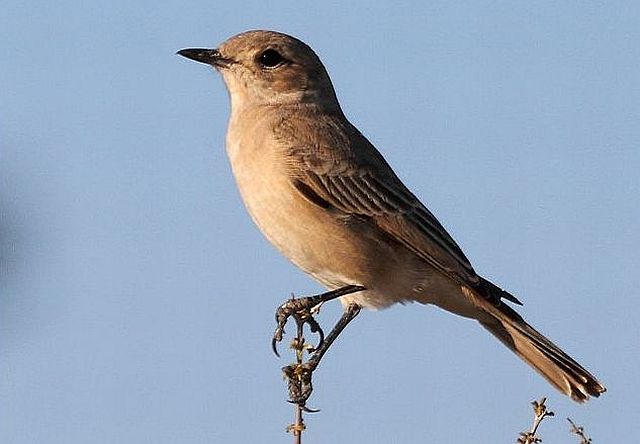 © Sharifa & Duke
© Sharifa & Duke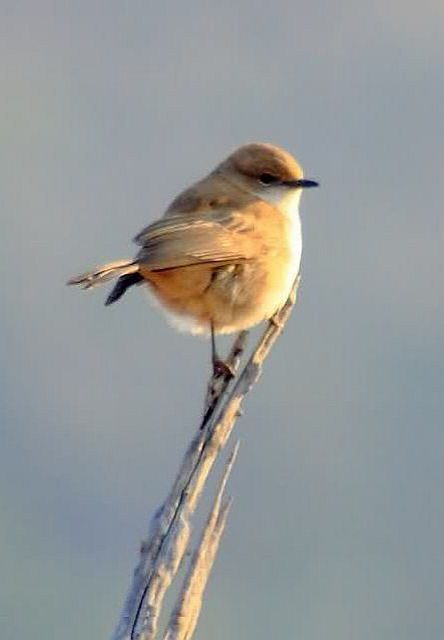 © Flutterby
© Flutterby © Flutterby
© Flutterby © ExFmem
© ExFmem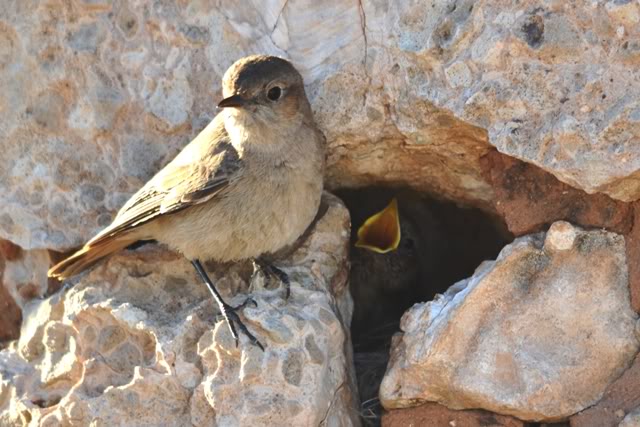 © Mel
© Mel